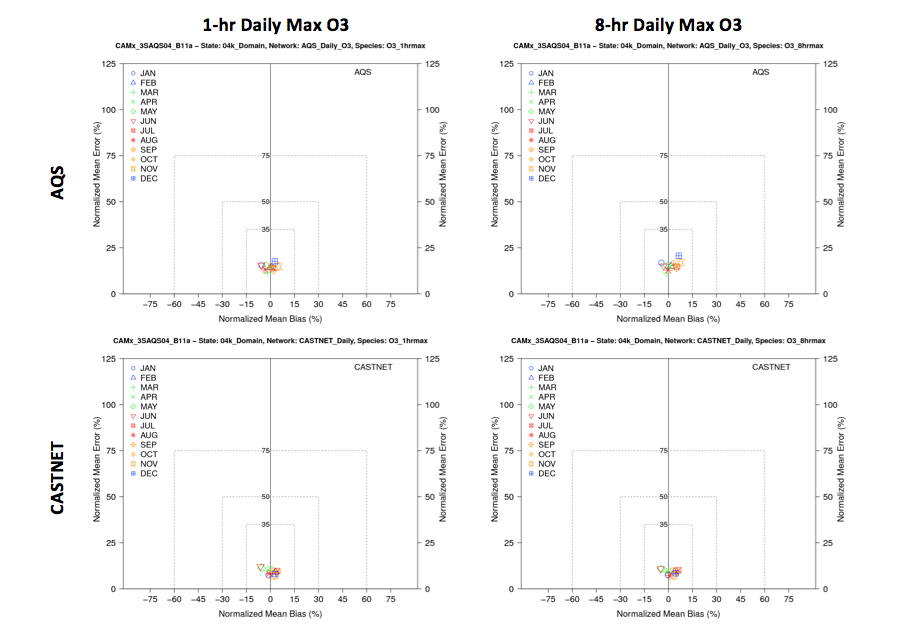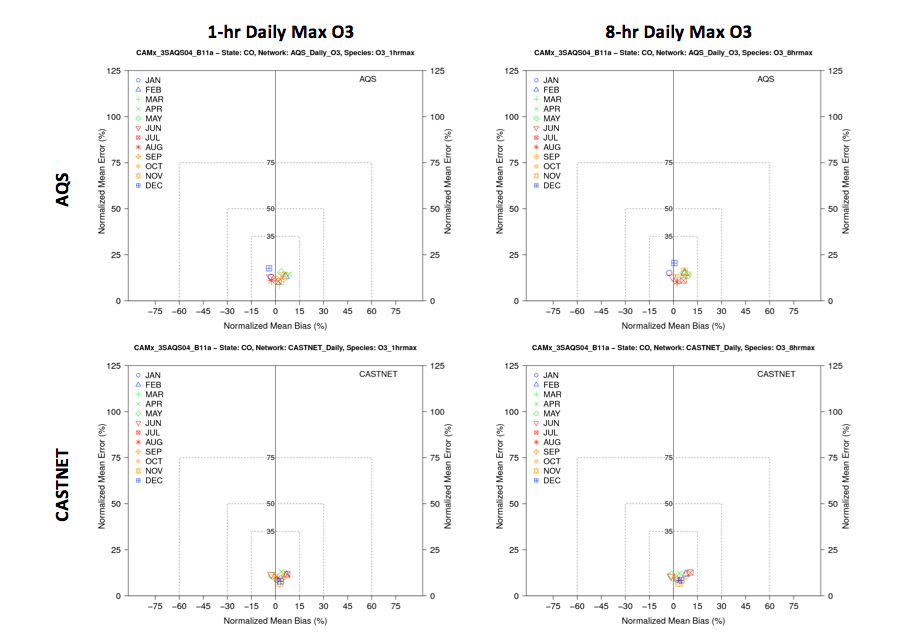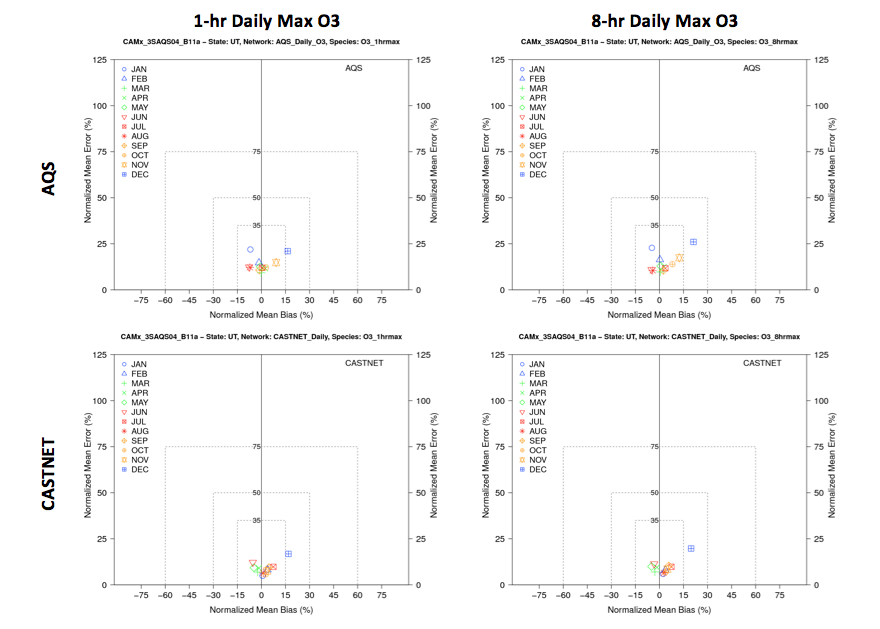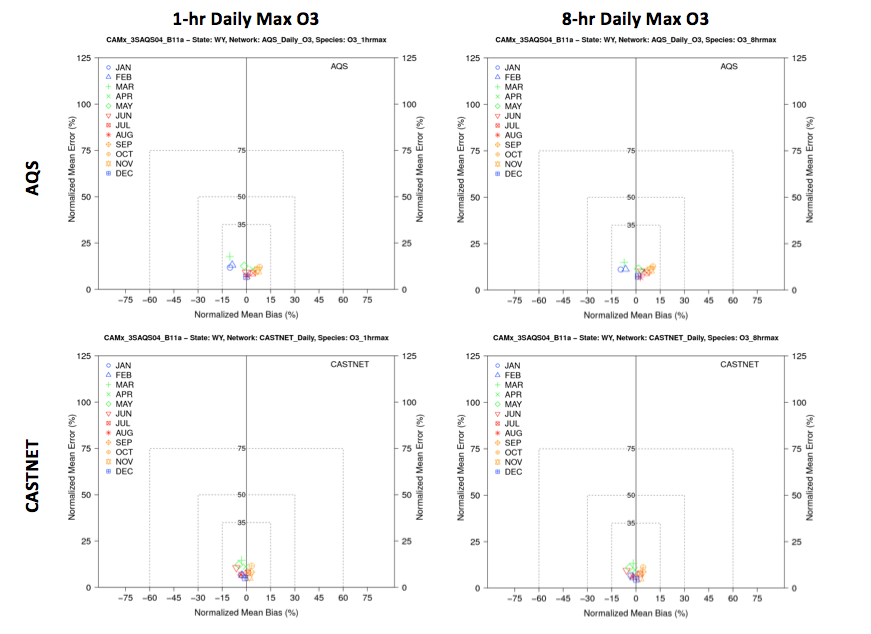Base2011a CAMx Modeling Results
Introduction
The Three-State Air Quality Study (3SAQS) performed photochemical grid modeling for the year 2011 using the Comprehensive Air Quality Model with Extensions (CAMx) version 6.10. The 3SAQS 2011 base year simulation version A (CAMx_3SAQS_Base11a) was evaluated for its skill at simulating ozone (O3), fine particulate matter (PM2.5), and wet deposition sulfur and nitrogen, with a focus on the 4-km domain modeling results. The model was evaluated for hourly O3 as well as daily maximum 1-hour (MDA1) and daily maximum 8-hour average (MDA8) O3. Carbon monoxide (CO), nitrogen dioxide (NO2), nitric acid (HNO3), and sulfur dioxide (SO2) were also included in the evaluation. The PM2.5 evaluation included total PM2.5 along with the component species sulfate (SO4), nitrate (NO3), ammonium (NH4), elemental carbon (EC), organic carbon (OC), organic aerosol (OA), and other PM (PM Other). The deposition evaluation focused on total sulfur and oxidized and reduced nitrogen species.The 3SAQS 2011 base case model performance was evaluated against concurrent measured ambient concentrations using graphical displays of model performance and statistical model performance measures. The CAMx_3SAQS_Base11a performance was compared against established model performance goals and criteria, following the procedures recommended in EPA’s photochemical modeling guidance documents. The evaluation included sub-regional evaluations for Colorado, Utah, and Wyoming, and evaluations by month and season.
The model performed well for ozone across almost all monitoring networks and periods. Exceptions included severe under estimations of high winter ozone events in Utah and Wyoming.
Modeled PM2.5 performance was mixed in the 2011 simulation. On an annual domain-wide basis, CAMx misses the performance criteria for total PM2.5 and organic carbon (OC). CAMx tends to do better at predicting the inorganic species (SO4, NO3, NH4) compared to the organic species (EC, OC). CAMx PM2.5 performance at all networks is well within the performance goals in the summer. Similar performance for CO, WY and UT indicates that the model biases in the three states are representative of the 4-km modeling domain as a whole. The total PM2.5 performance at the CSN network sites is as good or better than at IMPROVE sites in UT, CO and the 4-km domain, in most seasons except in the fall. The poorest agreement among the PM constituents is seen in OC and EC in winter, particularly at the CSN sites, with the OC and EC mass fraction being over-predicted by factors of 4 and 3, respectively. The model performance dramatically improves in the summer, when the modeled OC mass fraction is within 5% of CSN, but degrades again to a factor of 3 discrepancy in the fall. EC also tends to be over-predicted in most seasons at both networks, although EC mass fractions are much smaller than those of OC. The performance for OA is worse than that for OC because of the scaling used between these two species. The seasonal pattern of these biases (positive except in the summer at CSN sites) suggests an overestimation of the anthropogenic semi-volatile VOC partitioning to the particles, which is exacerbated as temperatures decrease, and as the partitioning mass increases.
Wet deposition model performance showed an underestimation bias in all regions for all species. In general CAMx appeared to be a good model of deposition and was influenced by underestimates of the key deposition parameters. Trends in the performance of several gas and particle phase precursors to wet deposition correspond with the trends in deposition performance, although more work is needed to determine the cause of the underestimates of the wet deposition species in the 2011 CAMx simulation.
3SAQS 2011 CAMx Model Performance Evaluation Report
Results



